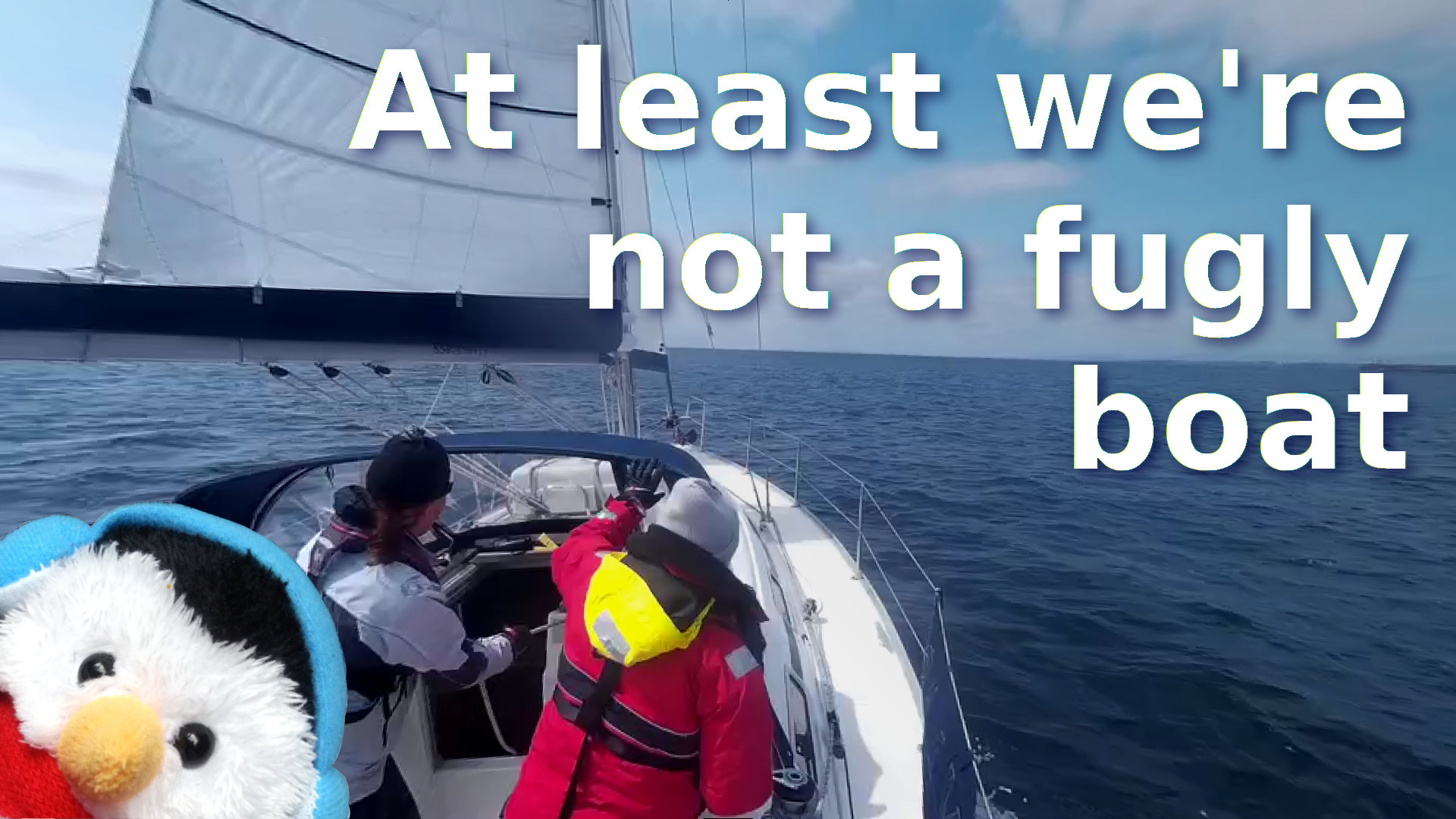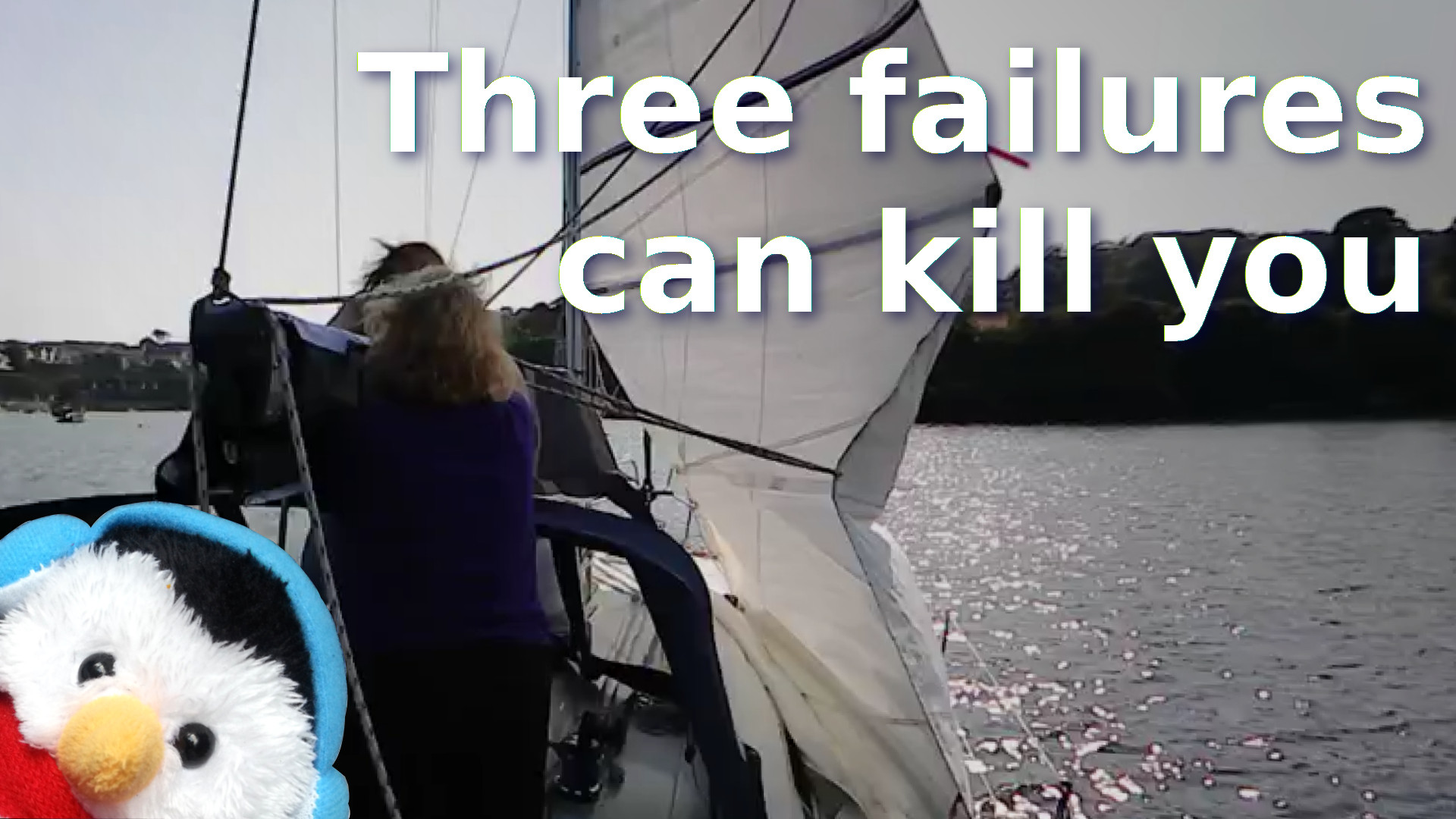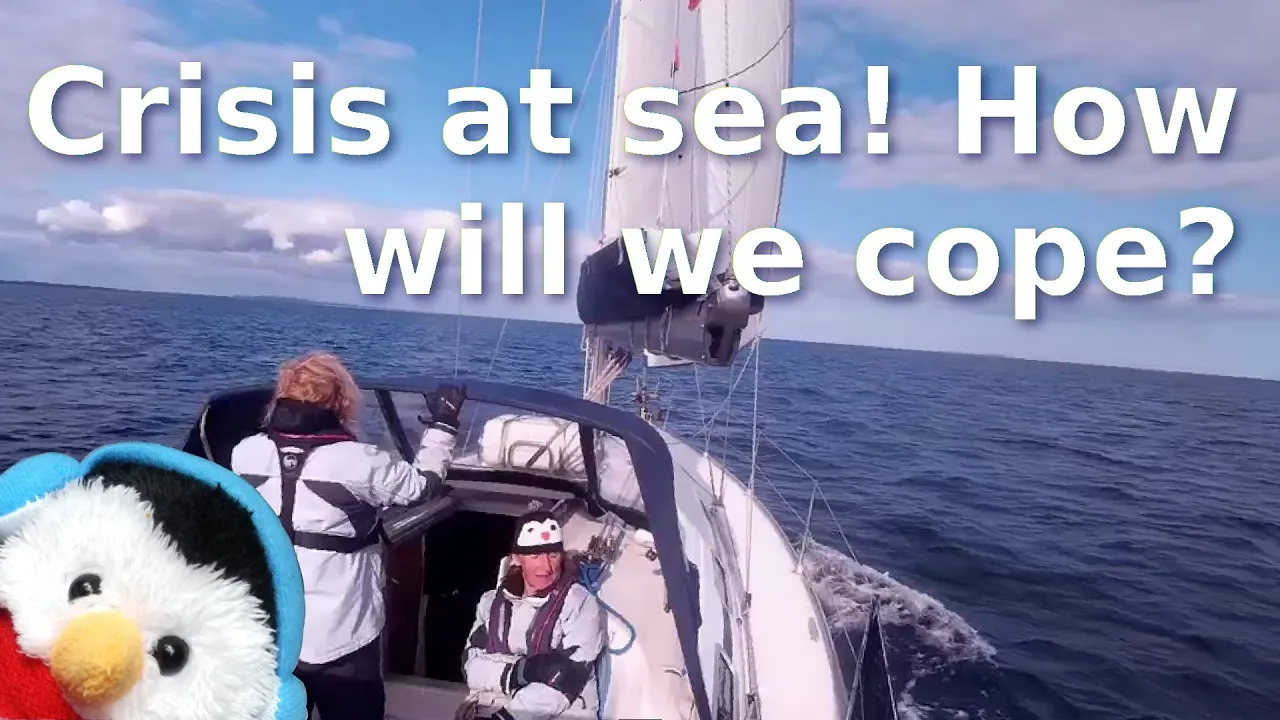We were in Arklow and the conditions were rough. It was so bad that large waves were coming up the river and bouncing Salty Lass. I was supposed to be working but I simply couldn't concentrate. So I decided to clean out our port side locker. The main reason that I wanted to clean out that locker was because I knew that I had my spare chafe protectors in there. On top of that one of our subscribers had sent us a long length of tubing to use as chafe protectors and we were in desperate need of it as I had gone through all of my chafe protectors that I had made at the end of last summer season. It was good to be cleaning as it was a simple job that needed no concentration and it at least made me feel as if I was doing something. All day Salty Lass was getting bumped around, but we were both glad that we were in and not out in rough seas. The tubing that I found from one of our subscribers worked well as a chafe protector, much better the protector than your rope.
We left the seas to settle down for 24 hours then we went out the next day. We did not go far because while we were out the fog just descended and we had only got to the outfall marker and we could no longer see the shore, so we went back in and waited for the fog to burn off. This did mean that we left late, so rather that aiming to go around the corner for Kilmore Quay, we headed for an anchorage outside Rosslare. We motor sailed most of the way, which is why we did not blog. Motor sailing is fairly boring. At Rosslare picking the right place to drop the anchor was a little tricky because there were lobster pots a plenty in the area. On top of that there were restrictions because we were anchoring right next door to a harbour for large boats and they had a no anchoring zone around the harbour. Other than that it was fairly easy to anchor right behind a cliff that gave us plenty of shelter in strong winds.
While we were at Rosslare we decided to move Salty Lass so that we were closer to the cliff and further away from the pot buoys. From our anchoring in quite high winds we can recommend:-
- Lifting the anchor - In high winds the boat will hunt a lot more than usual, so wait until the boat is above the anchor and lift then. That way you are only lifting the chain and not trying to drag the boat forward on the chain. It is the job of the helmer to steer the boat to the anchor.
- Know your depth - Know the depth that you are anchoring at so that you can motor to where you want to drop the anchor and start dropping the anchor before you get to the stop position.
- Motor into the wind - If you try and keep the wind on the nose for as long as possible, the boat will hunt less.
- Start reversing immediately - Once the anchor is on the sea bed, start reversing immediately that way you can keep the boat under control as long as possible
- Be aware that taking transits can be difficult - In strong wins you will hunt a lot more, so taking a transit is harder, but by keeping the boat facing the wind as much as possible, then taking a transit can be done.













